
Every time I walk into my kitchen and smell melted chocolate, I think about how one word—‘brownie’—travels across languages with the same sweet punch. Seriously, isn’t it wild how this little square of gooey chocolate has made its way everywhere? But next time your kid like mine, Tamsin, asks, “How do you say brownies in English?”—well, let’s make sure you’re more than ready with an answer and a fun story.
The English Word 'Brownie': More Than Just a Treat
So, how do you say 'brownies' in English? Simple: it's just brownies. No translation tricks here—this word is used almost everywhere. But where did the name come from? Back in 1896, Fannie Farmer, a famous cookbook author, published a recipe that would lead to the brownie’s world domination. She actually first called them “Brownie’s Food” in the Boston Cooking School Cook Book. Now? Hop into any café from Los Angeles to London, and you’ll find a tray of brownies calling your name. They didn’t just stick to English. Even in Mexico, ‘brownie’ is often used just as it is. That’s how iconic they’ve become.
But here’s what’s strangely cool: ‘brownie’ is also the name of a mischievous little sprite from Scottish folklore long before it ever meant chocolate. Imagine a tiny elf sneaking snacks at night—now that’s a bedtime story. This magical-sounding name just happened to work perfectly for a dessert that feels like a treat made by fairies. Isn’t language a funny thing?
Brownies Around the World: Translating More Than a Word
Let’s say you’re anywhere from Madrid to Tokyo, and someone waves a tray of these fudgy squares at you. Chances are, they’ll still call them ‘brownies.’ But if you want to impress your friends or your multilingual little one, you could mention that in French, people sometimes say ‘gâteau au chocolat fondant’ (melting chocolate cake), though 'brownie' is still the common pick. Spanish-speakers usually stick with ‘brownie.’ In Germany? Just ‘Brownie’ with a slightly different pronunciation. Japanese menus often spell it out in katakana as ブラウニー (buraunī).
Sometimes, you’ll find people trying to give brownies a local twist. Maybe adding dulce de leche in Argentina, or swapping out nuts for dried cherries in France. Still, the word ‘brownie’ is tough to beat. When Tamsin’s teacher once introduced them as “bizcochos de chocolate americanos,” the entire class was just confused. Kids want brownies; they know the real deal when they see it.
You might think of other desserts that get tweaked names: ‘cookie’ becomes ‘galleta’ in Spanish, ‘cake’ is ‘torta’ or ‘pastel.’ But 'brownie'? The name is sticky—just like the batter on the bowl no one wants to wash. It shows the power of food to break language barriers without anyone needing a dictionary.
Take a look at how the word 'brownie' pops up across some countries and menus:
| Country | Word Used |
|---|---|
| USA | Brownie |
| Spain | Brownie |
| France | Brownie / gâteau au chocolat fondant |
| Germany | Brownie |
| Japan | ブラウニー (buraunī) |
| Argentina | Brownie |
| Mexico | Brownie |
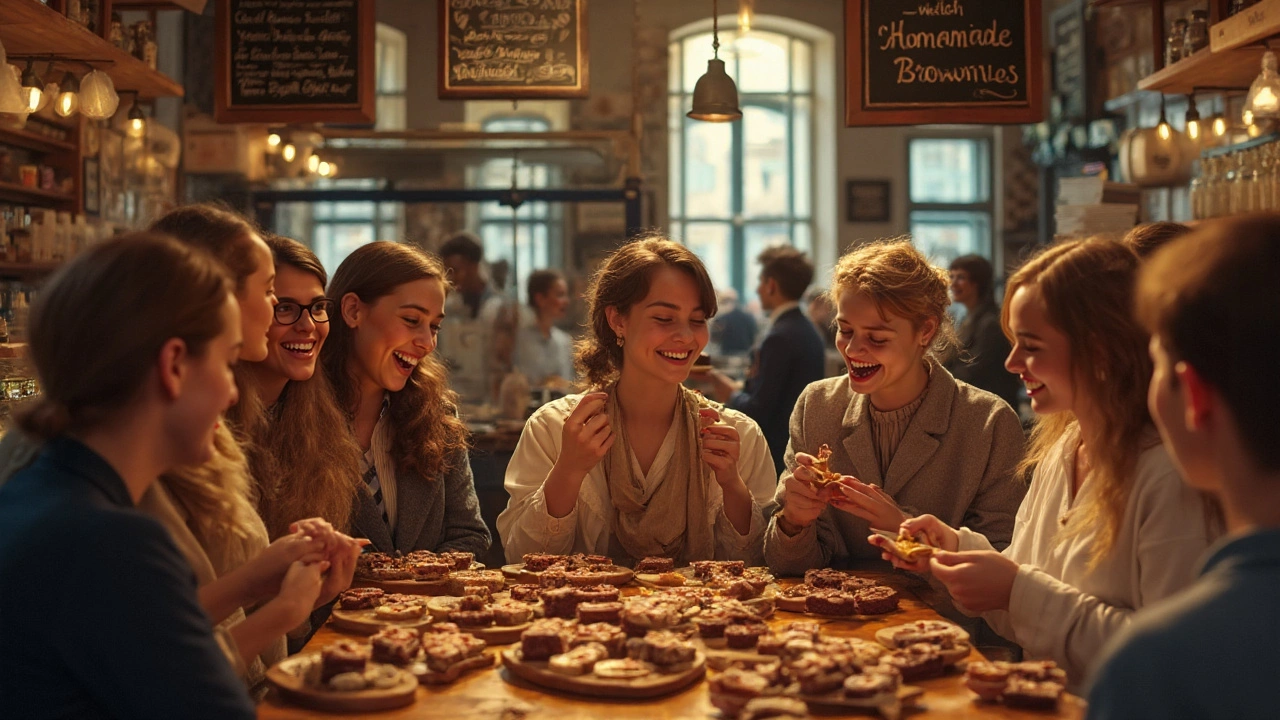
Baking the Perfect Brownies: Language & Kitchen Tips
Baking brownies isn’t just about a recipe; it’s about knowing a few real English food terms. Want chewy edges? That’s “edges,” not “crispy borders.” Want a fudgy middle? You’ll say “gooey center.” The words may look simple, but foodies will know what you mean. When Tamsin and I bake together, we always argue about corners versus centers. She swears by the rich inside; I love those slightly crisped bits on the sides.
Now, if you’re swapping recipes with English-speaking friends, a few vocabulary hacks are handy. ‘Batter’ means the uncooked mixture (not ‘dough’). Most American recipes use ‘cup’ and ‘stick’ instead of grams—1 stick of butter is about 113 grams, by the way, which has saved me from a few baking disasters. Want that shiny crackly top? Mix your sugar and eggs well before adding in anything else. That’s the magic step.
Oh, and if someone says “cakey brownies,” don’t expect something thick and gooey—they mean a lighter, almost cake-like bite. “Fudgy” is what you want for dense, ultra-rich squares. Here’s a cheat sheet:
- Fudgy: Dense and rich like a block of chocolate
- Cakey: Lighter, with more air, a hint of sponge
- Edges: The thin, sometimes crisp outer bits
- Centers: The gooey, soft part in the middle
- Crust: That thin, shiny layer on the top
So whether you’re baking for yourself or hosting a bake-sale, throwing around the right English kitchen words when talking about brownies just adds that extra pinch of confidence.
The Role of Brownies in American and Global Culture
You don’t have to be American to become obsessed with brownies, but there’s no denying this dessert is deeply woven into the fabric of the USA. Back in 1907, the Palmer House Hotel in Chicago started selling what might be the first ‘official’ brownie: a rich chocolate bar topped with walnuts and apricot glaze. That recipe is still served at the same hotel, more than a century later, and you can totally taste the history in every bite.
Brownies found their place in lunchboxes and family gatherings across the USA fast. They even became bake-sale staples—where little kids measure out batter in sticky kitchens. And when cooking shows go abroad? Brownies show up right next to local sweets. TV bakers in the UK have their “ultimate brownies” lined up beside Victoria sponges. In Australia, a good brownie is just as likely to have macadamias mixed in—sunshine in every square.
Movies made this treat famous, too. Remember that scene from “Julie & Julia” where Julia Child declares she never met a brownie she didn’t like? I felt that in my soul! From Hollywood to home kitchens, brownies show that a single word can invite anyone to take a bite, no matter where they grew up.
Something about brownies—maybe the smell of hot chocolate or the crack as you cut the first square—brings people together. At birthday parties, everyone wants a piece with an edge. On rainy days, there’s nothing cozier than sharing a batch straight from the oven. Brownies don’t care where you’re from; they just want you to be happy for a moment (or three).
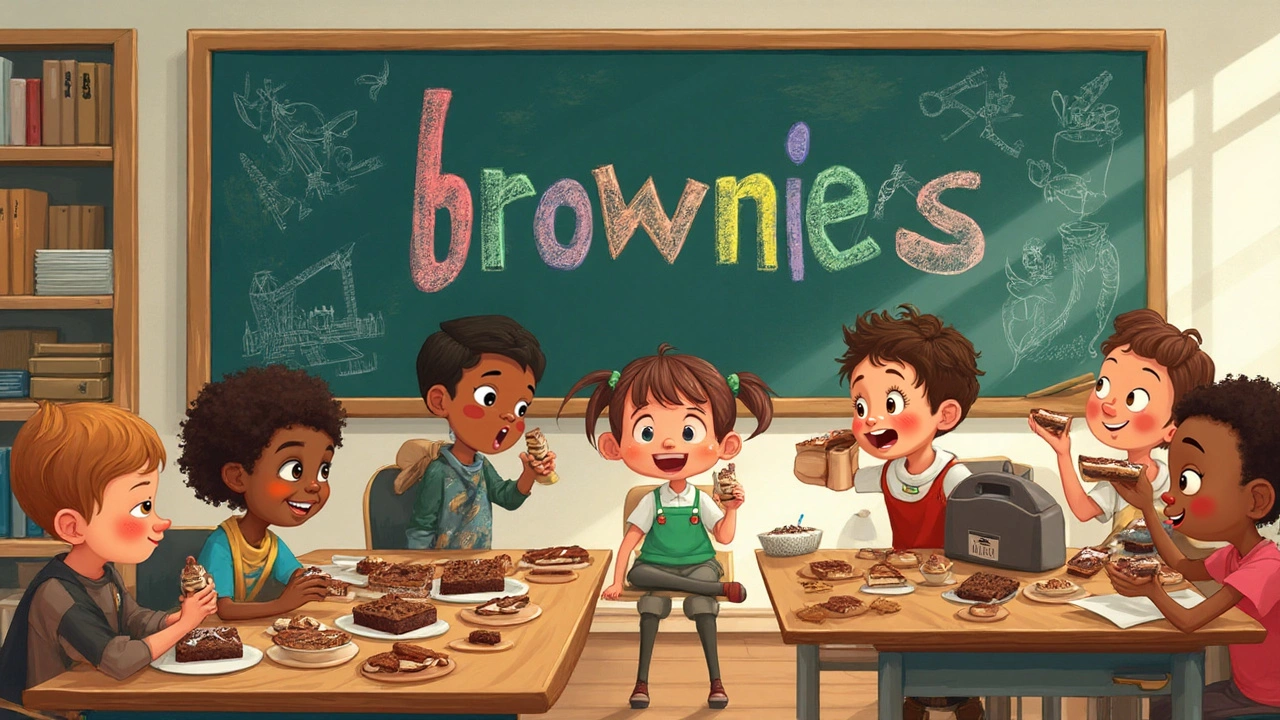
Tips for Talking and Baking Like a Native English Speaker
If you really want to bake or talk brownies like a native, here’s a handful of cheat codes that I wish someone had taped to my fridge when I started out:
- Say “brownies” for both one piece or a whole tray. It works as singular or plural in casual chat: “Who wants brownies?”
- If you ask for a “brownie recipe,” you’ll get tons of results in English baking blogs. Search for “easy brownies” or “fudgy brownies” for the best tips.
- Bake at 350°F (about 177°C)—that’s the classic American oven temp for brownies. If you’ve only got a fan oven, drop it by 10 degrees.
- When someone says “from scratch,” they mean no store-bought mix. You start with butter, sugar, eggs, chocolate—the real deal.
- In English, “box mix” is that magical little package you buy in supermarkets: Betty Crocker, Duncan Hines, and Ghirardelli rule the world of emergency brownies.
- Want to jazz up your English? Say “these brownies are to die for” if you brought homemade treats to a party. Guaranteed smiles.
Little things help you sound natural. When Tamsin wanted to bake “brownies from scratch” for her birthday, it made her feel like a grownup—especially after shouting “Don’t overmix!” (classic kitchen English for ‘Just stir it, don’t turn it into glue.’)
And if you’re ever traveling, don’t sweat it—order ‘brownies’ anywhere, and you’ll get the sweet reward you’re looking for. Language doesn’t stand between you and dessert.


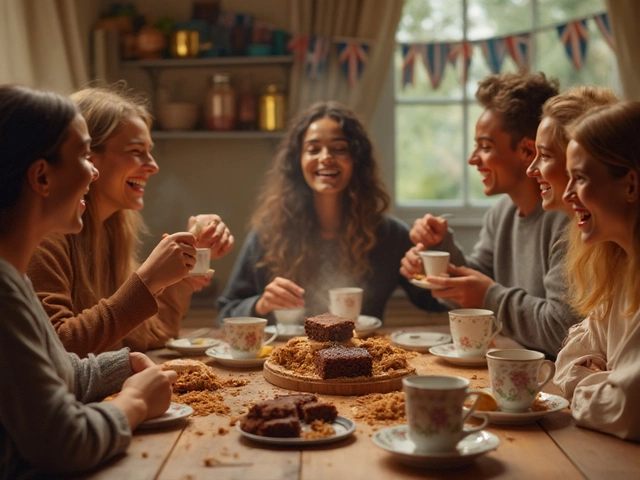
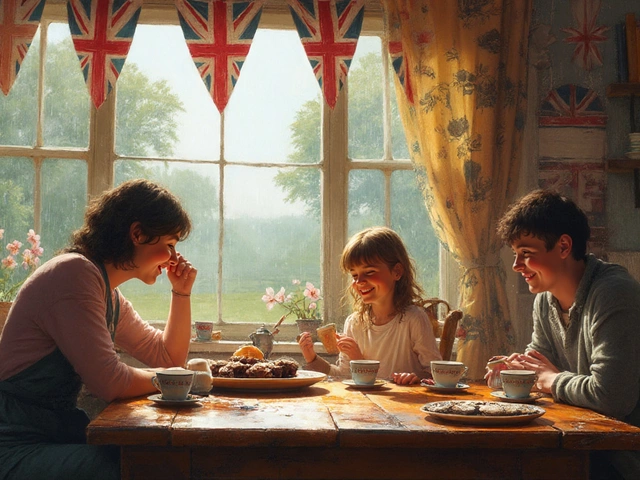
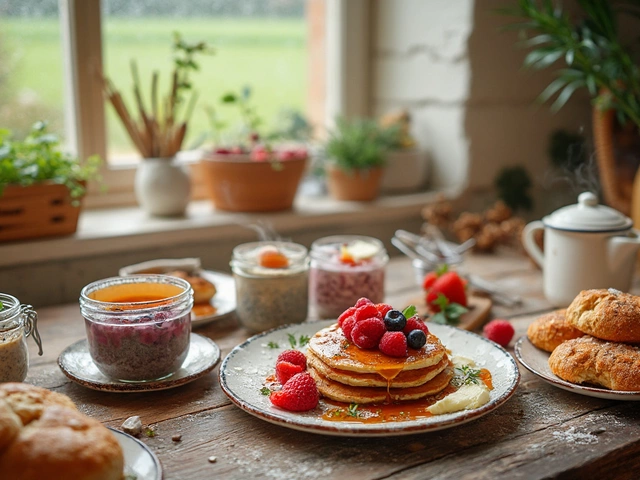
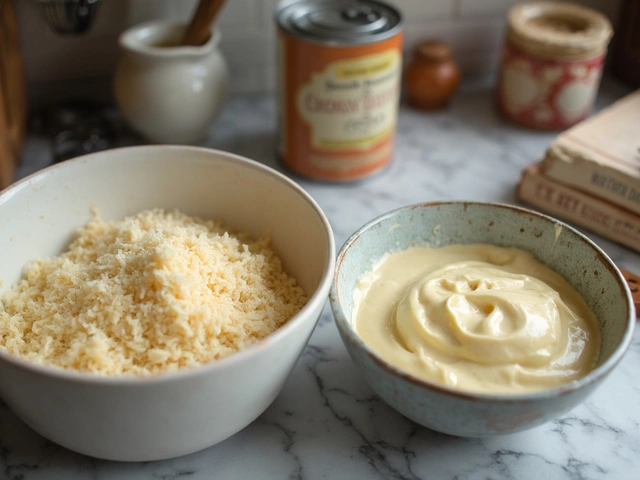
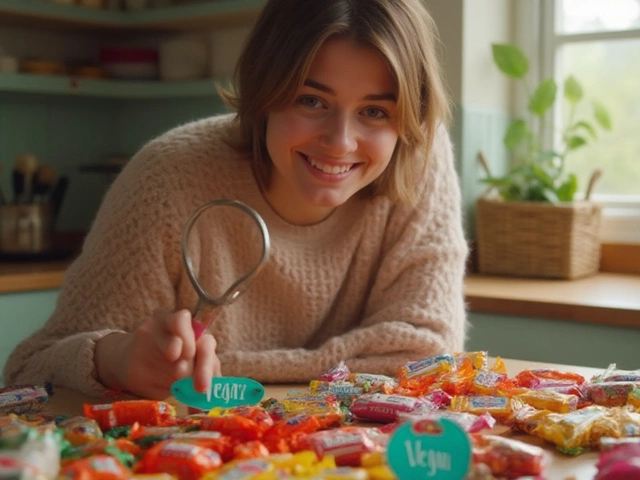
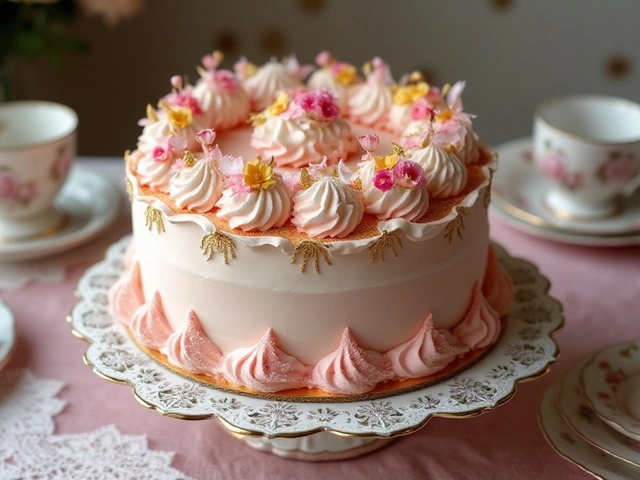
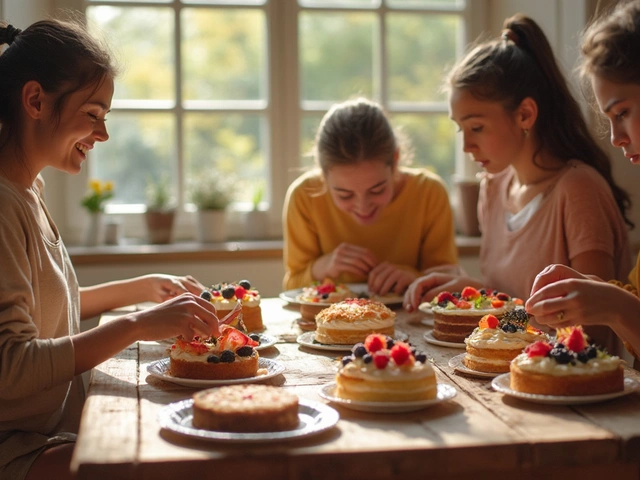
Write a comment